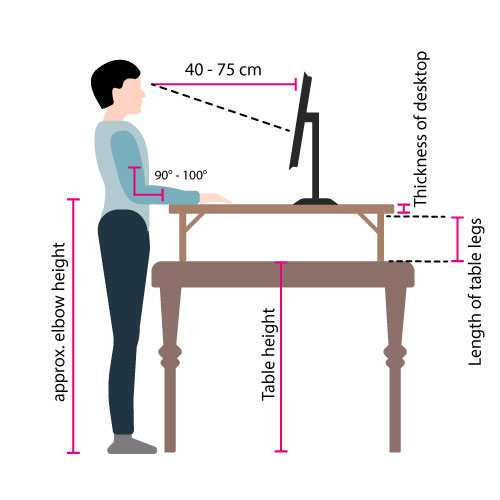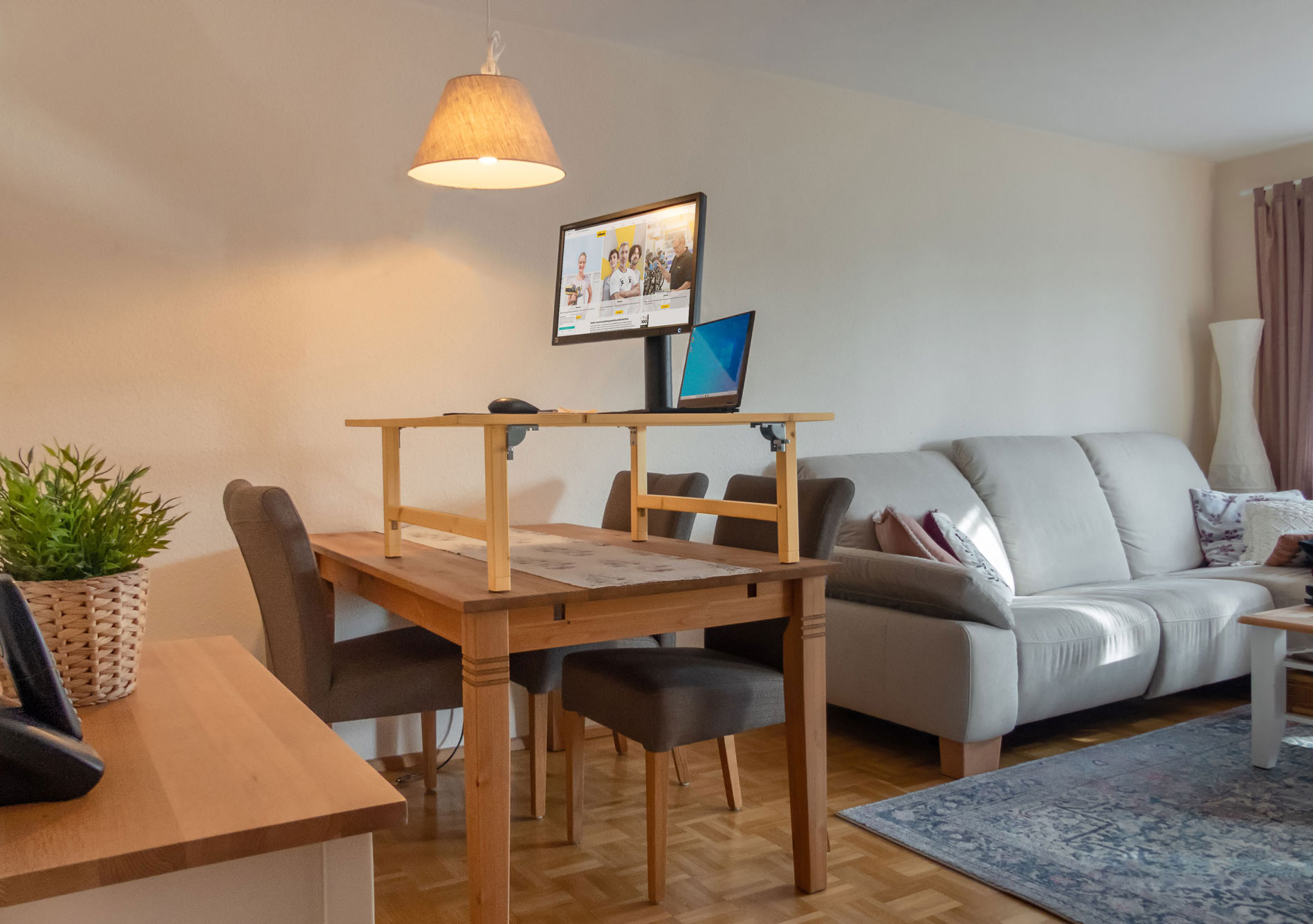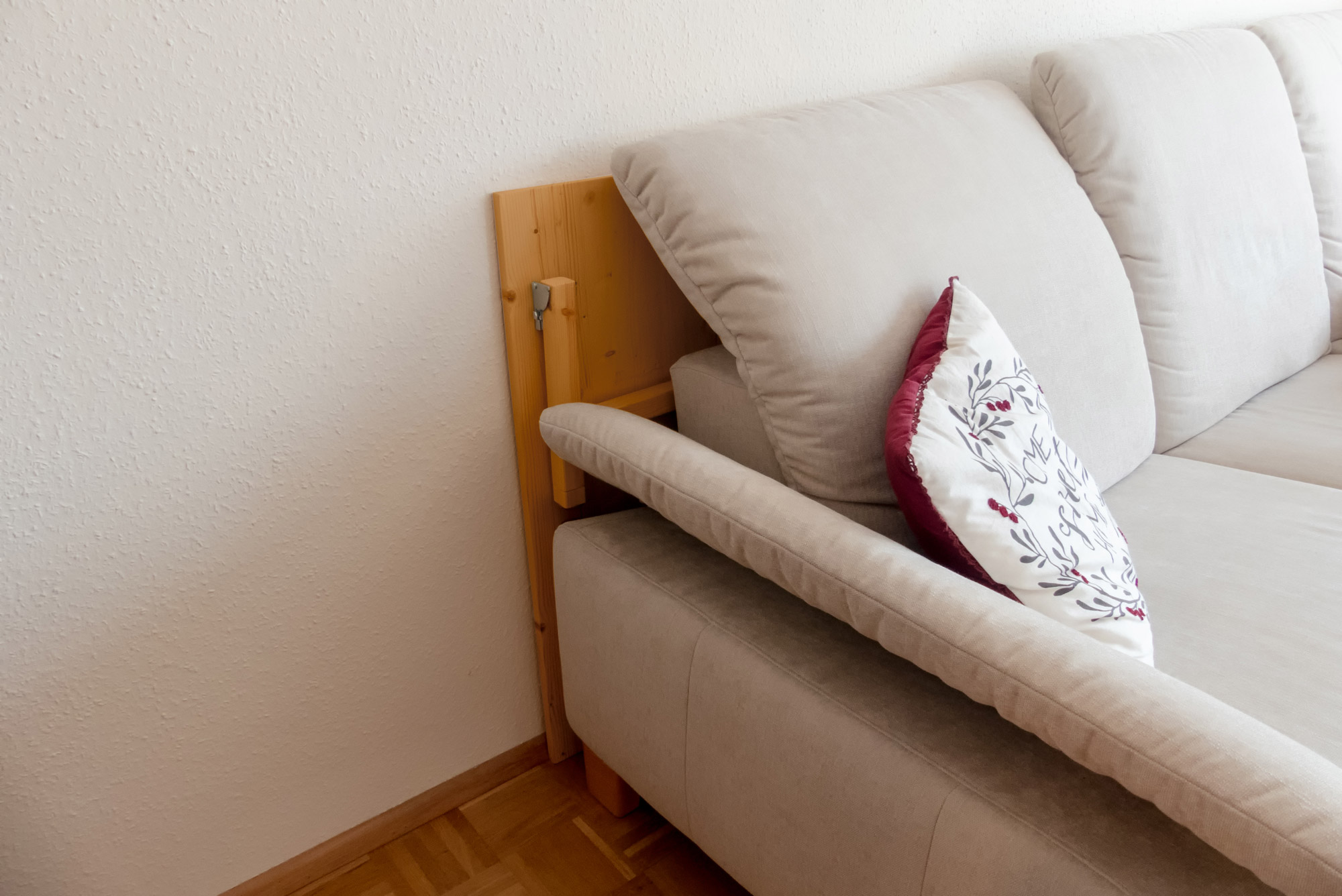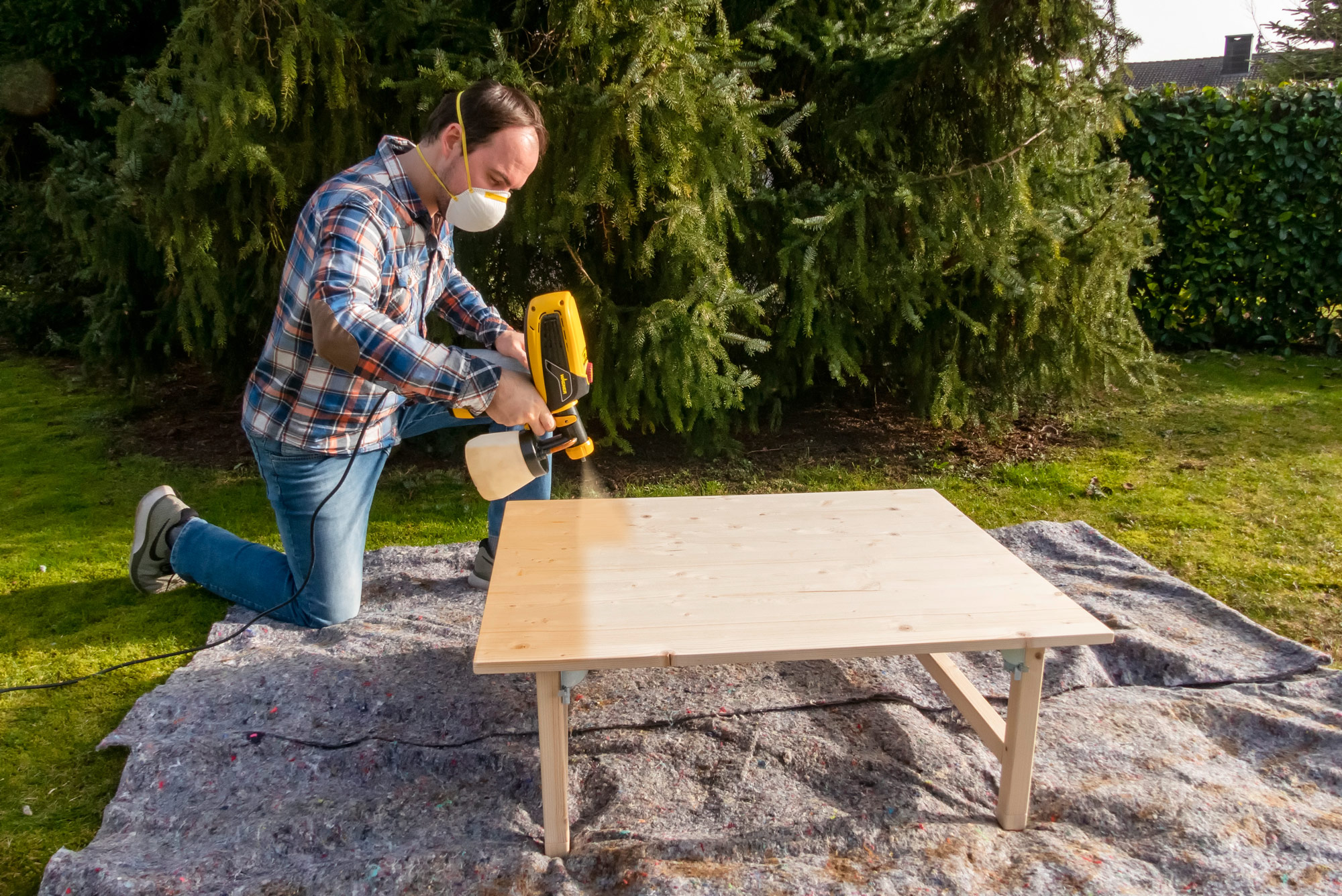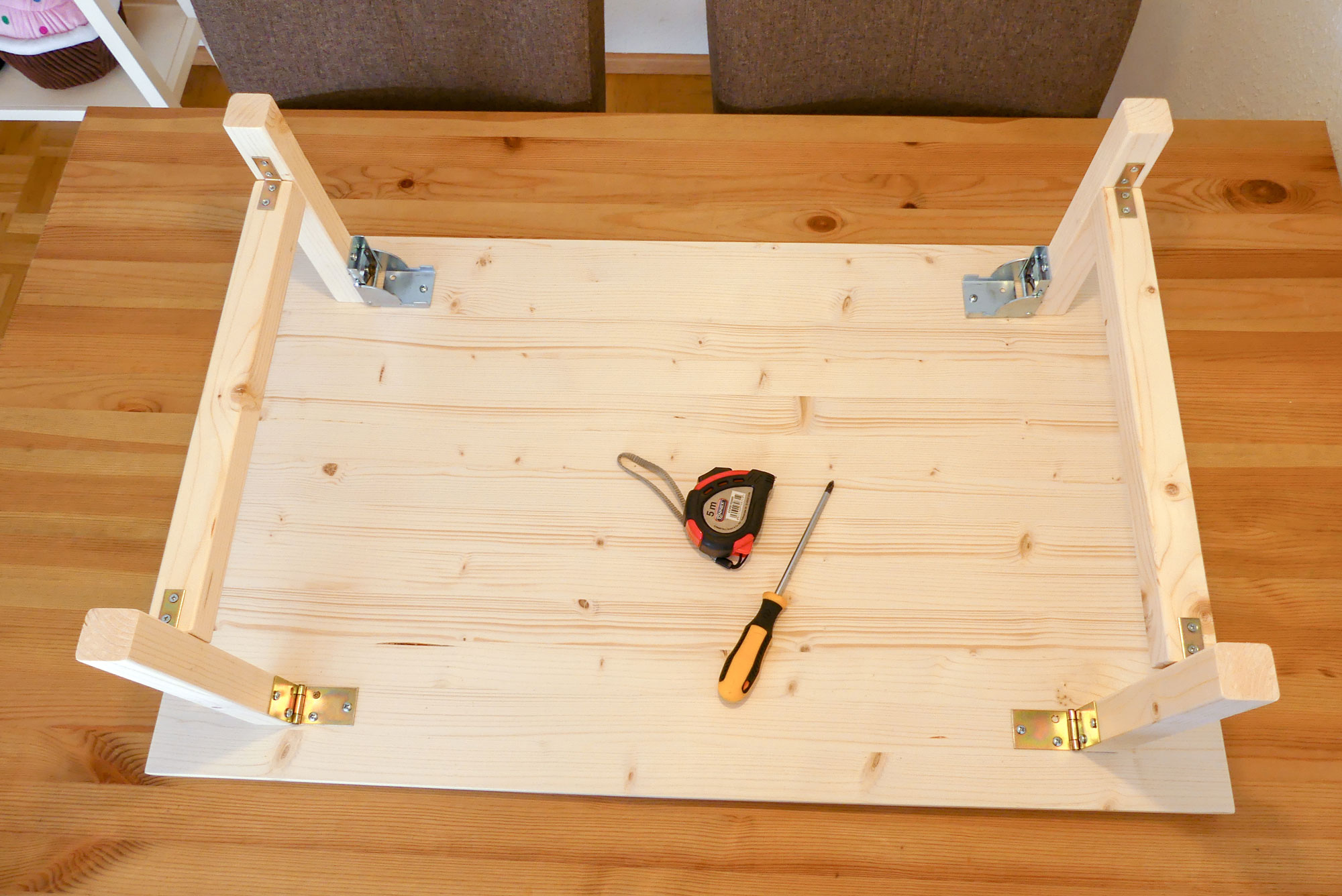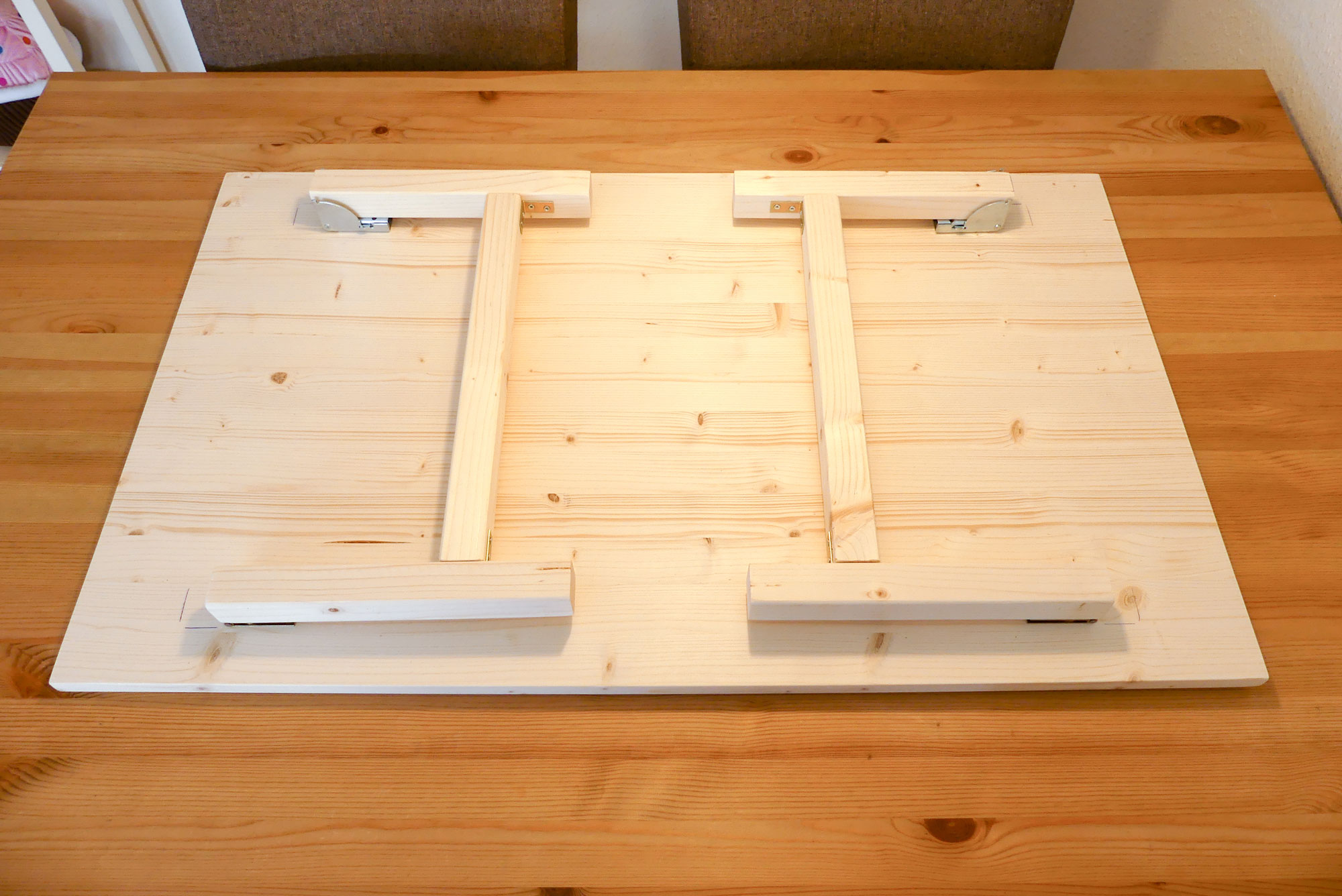Instructions: How to build your own wooden desk attachment
Even before we look at the materials needed, it is important to see what surface area you need and at what height. So grab your tape measure!
For the storage area, place your work materials on the table: Laptop or screen, keyboard and mouse. Then measure generously how big you want the top of your desk attachment to be. For example, if you want to place a laptop and monitor next to each other on the raised desk top, a width of at least 70 centimetres is recommended. The shelf should also be large enough so that it is possible to rest your forearms.
Now turn your attention to the question of how high the desk attachmentshould be. First measure the height of the deskyou want to upgrade to a standing desk. In the next step, measure from the soles of your feet to your elbows. The best way to do this is to imitate the posture you adopt when working: Let the shoulders sink down in a relaxed manner and raise the forearms so that they form a right angle to the upper arm.
Now you have to do a little maths: Subtract the table height from the measured body height. Also subtract the thickness of the tabletop. The resulting number is the length of the legs of your desk attachment!
Therefore, Length of the table legs = height from the soles of the feet to the elbows - table height - thickness of the top of the desk attachment
And when you don't need the desk attachment, it folds up in seconds and can be stored in a space-saving way.


